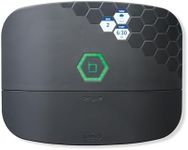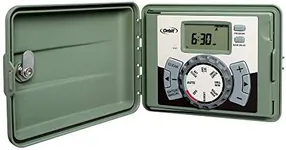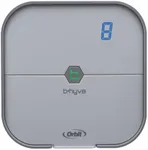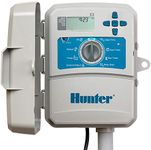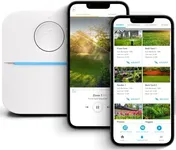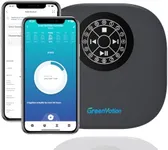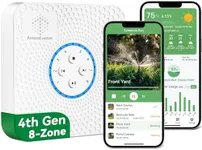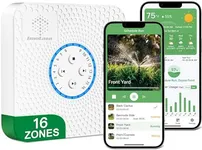Buying Guide for the Best Irrigation Controllers
Choosing the right irrigation controller is essential for maintaining a healthy and efficient garden or lawn. An irrigation controller, also known as a sprinkler timer, automates the watering schedule for your landscape, ensuring that your plants receive the right amount of water at the right times. When selecting an irrigation controller, it's important to consider several key specifications to ensure it meets your specific needs and preferences. Understanding these specifications will help you make an informed decision and keep your garden thriving.ZonesZones refer to the different areas of your garden or lawn that can be watered independently. This is important because different plants and areas may have varying water requirements. Controllers typically range from 4 to 16 zones or more. If you have a small garden, a controller with fewer zones (4-6) may suffice. For larger landscapes with diverse plant types, you might need a controller with more zones (8-16 or more). Assess the number of distinct areas in your garden that require separate watering schedules to determine the right number of zones for you.
Programming FlexibilityProgramming flexibility refers to the ability to customize watering schedules and durations. This is crucial for optimizing water usage and ensuring plants get the right amount of water. Controllers can offer basic programming with fixed schedules or advanced options with multiple start times, seasonal adjustments, and weather-based adjustments. If you have a simple garden, basic programming might be sufficient. However, for more complex landscapes or if you want to conserve water, look for controllers with advanced programming features that allow for greater customization and efficiency.
Weather SensorsWeather sensors help the irrigation controller adjust watering schedules based on real-time weather conditions, such as rain, temperature, and humidity. This is important for preventing overwatering and conserving water. Some controllers come with built-in weather sensors, while others can be connected to external sensors. If you live in an area with variable weather, a controller with weather sensors can be very beneficial. For regions with more stable climates, this feature might be less critical but still useful for optimizing water usage.
Smart ConnectivitySmart connectivity allows the irrigation controller to be connected to your home Wi-Fi network, enabling remote control and monitoring via a smartphone app. This is important for convenience and flexibility, as it allows you to adjust watering schedules from anywhere. Controllers with smart connectivity can also integrate with other smart home devices and receive weather updates for more precise watering. If you value convenience and want to manage your irrigation system remotely, look for controllers with smart connectivity features. For those who prefer manual control, this feature may not be necessary.
Ease of Installation and UseEase of installation and use refers to how simple it is to set up and operate the irrigation controller. This is important for ensuring that you can quickly get your system up and running without professional help. Some controllers come with user-friendly interfaces, clear instructions, and even video tutorials. If you are not very tech-savvy or prefer a straightforward setup, look for controllers that are known for their ease of installation and intuitive operation. For more experienced users, advanced features might be more appealing even if they come with a steeper learning curve.
Durability and Weather ResistanceDurability and weather resistance refer to the controller's ability to withstand outdoor conditions, such as rain, sun, and temperature fluctuations. This is important for ensuring the longevity and reliability of the device. Controllers designed for outdoor use should have weatherproof housings and be built to endure harsh conditions. If your controller will be installed outdoors, prioritize models with high durability and weather resistance. For indoor installations, this feature is less critical but still worth considering for overall product longevity.



